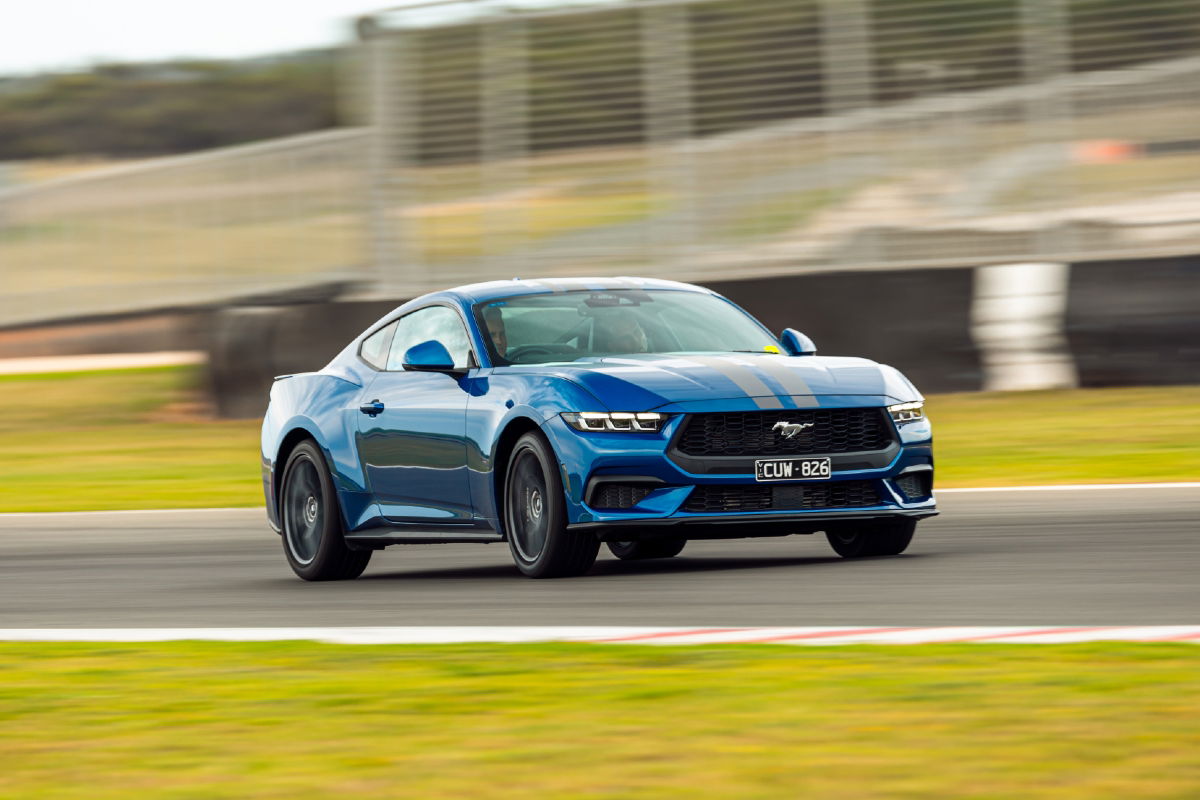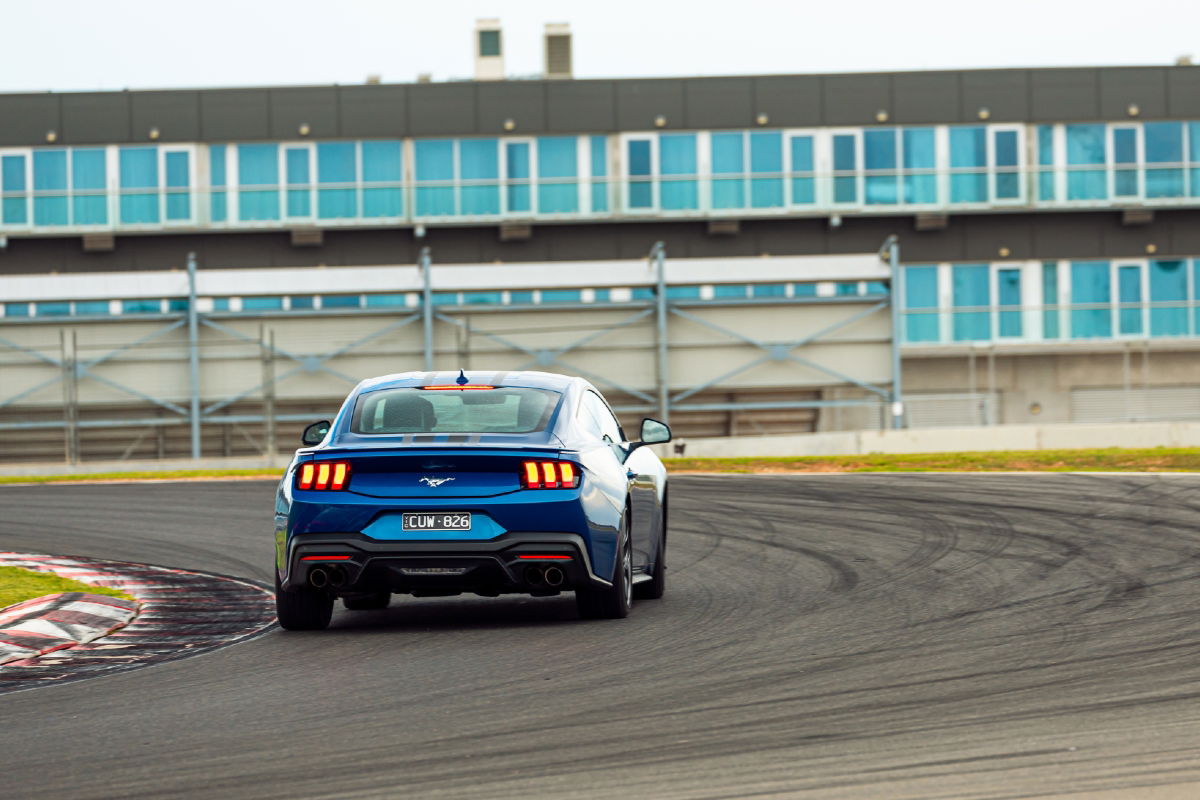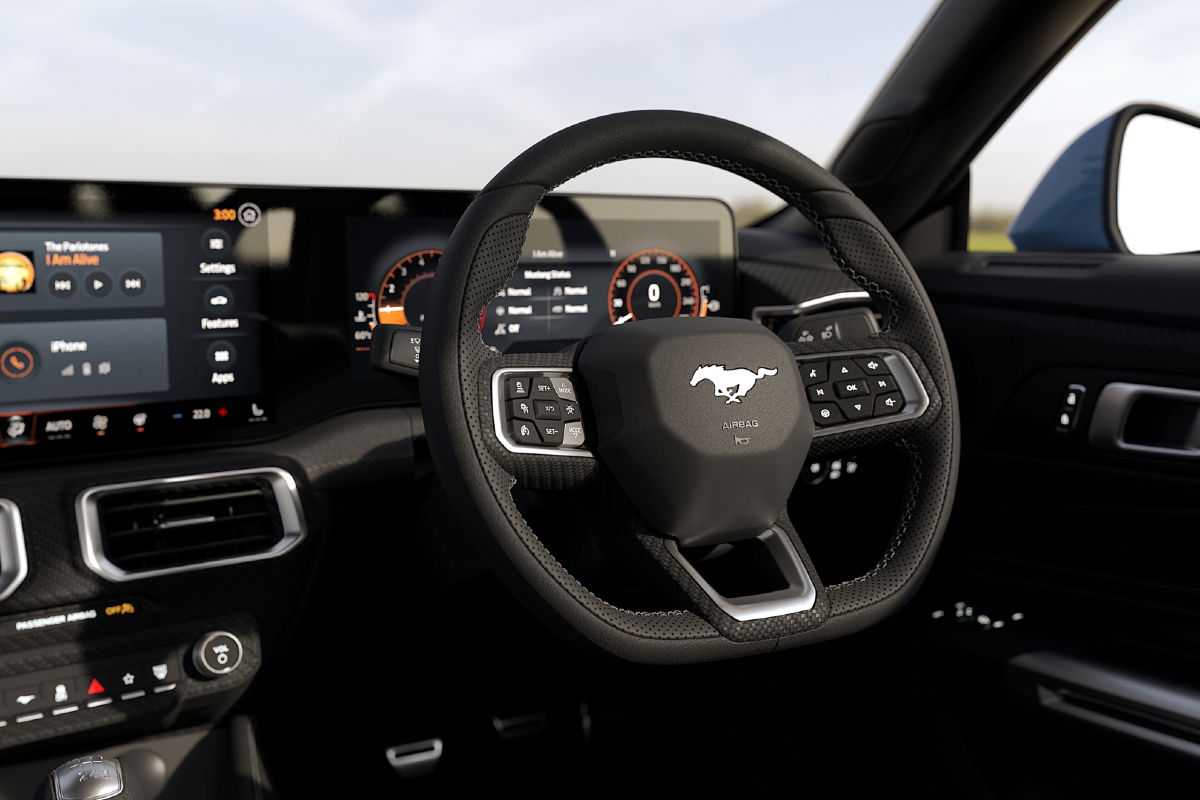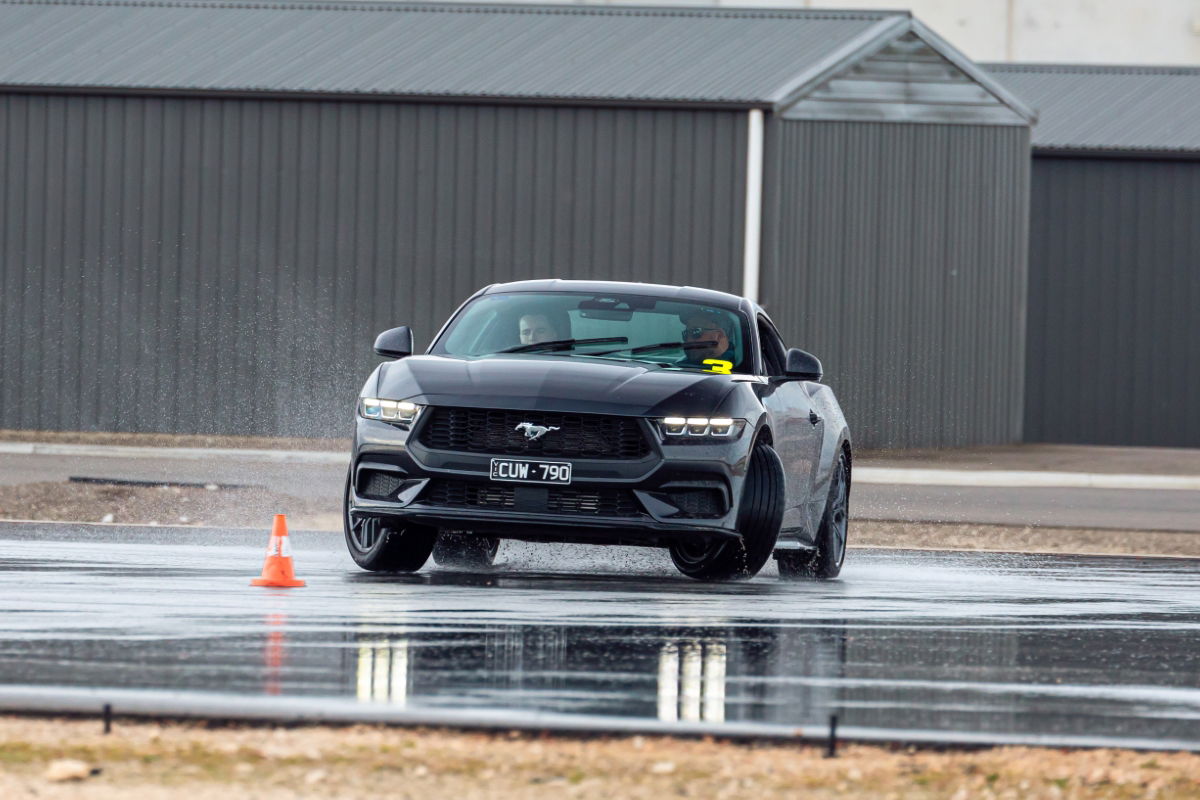
I like the four-cylinder Ford Mustang EcoBoost.
There, I said it. I don’t regret it. I know it’s not a popular opinion and one that will surely have you questioning my performance car fan credentials – and possibly my sanity. But having finally driven the latest generation Mustang EcoBoost, having already experienced the Dark Horse and GT, I’ve come away as a fan.
READ MORE: Review – Ford Mustang GT, the last muscle car standing
Let me crystal clear though – the Mustang GT is better and the Mustang Dark Horse is the best. A Mustang without a V8 isn’t the perfect Mustang, but that doesn’t mean it isn’t a good performance car. The latest version of this ‘entry-level’ ‘Stang gets a new version of the blue oval brand’s 2.3-litre four-cylinder turbocharged petrol engine.
Despite being the same capacity and cylinder count as the old model, Ford says the EcoBoost is a new design, incorporating its new Modular Power Cylinder technology. Whatever they’ve done it now makes 232kW and 475Nm, and is paired exclusively to a 10-speed automatic transmission. That’s more-than-enough performance for the EcoBoost and coupled with its rear-wheel drive layout this feels like a fun car to drive from the moment you get behind the wheel.

Obviously it doesn’t sound like a Mustang when you press the start button, but if you can put aside the fact it isn’t a V8 you will soon appreciate the EcoBoost for what it is. This isn’t an alternative to the V8-powered GT, and frankly there aren’t many cars on the market that compete with the Mustang GT. Instead, the EcoBoost is a challenger to those considering the Nissan Z, Toyota Supra and even the likes of the Volkswagen Golf R and Toyota GR Corolla (based on performance and price).
READ MORE: Review – Ford Mustang Dark Horse, driven on road and track
Yes, that’s strange to compare a coupe to a hot hatch, but given the rising prices these vehicles are now direct competitors in terms of what they cost, so it does make the EcoBoost pretty appealing if you’re looking for the most bang for your buck.
Although, like most new cars launched in the last few years, they are asking for a lot more bucks than before. The EcoBoost is priced from $64,990 (plus on-road costs), which is a major increase over the model it replaces, a whopping $12,000 more expensive than the old EcoBoost which also makes it just $300 less than the out-going GT model. But when you consider the GR Corolla will set you back $64,190 and a Golf R starts at $70,590, the EcoBoost looks more appealing in the current market.
It looks sharp too, with the classic Mustang silhouette, even if the EcoBoost gets a unique front end design which lacks the aggression of the GT and Dark Horse. And the good looks carry over to the interior, where Ford has introduced a new hi-tech digital display to replace the conventional dashboard and infotainment system.

The instrument panel is a particular highlight, as it now allows for an array of configurations from a standard display to a specific Sport and Track mode as well as a really cool line-up of classic Mustang models. You can choose between the original 1960s round dials, the ‘80s Fox Body (which illuminates in green at night) or the ‘90s SVT Cobra white dials.
VIDEO: Ford Mustang Dark Horse at Charlotte Motor Speedway
The latter is actually a recent addition, which was not available on the Mustang when I drove it a few months ago in France, as it was introduced as an ‘over-the-air’ software update, which highlights the modern technology push Ford is making. It also means there is scope for more in the future, so if you have a favourite retro Mustang dash, be sure to let Ford know and maybe that will be a future update.
That’s all the facts and figures – but what about the driving experience? Like I said at the start, while the V8-powered GT may be the obvious choice, the EcoBoost has a lot to offer those willing to give it a chance.

It’s a fun car to drive, especially through the twisting Adelaide Hills that we experienced on our way to The Bend to sample it on the track. What it lacks in brute strength on straight stretches it makes up for in the corners, it feels lighter in the front end than the GT so it turns sharply and feels more nimble and agile.
On the track you do notice the lack of shove out of the corners, but on a winding section of road, the EcoBoost would have no trouble keeping up with the GT (or maybe even gapping it). Yes, it feels that capable.
This is not the ‘poor man’s Mustang’ but rather a fun, dynamic alternative for those who want a quick and stylish performance car and previously thought a rear-wheel drive coupe was out of reach. Like me, you’ll still have to explain your love of the non-V8 Mustang, but take anyone for a drive in the EcoBoost and they’ll understand soon enough.












Discussion about this post